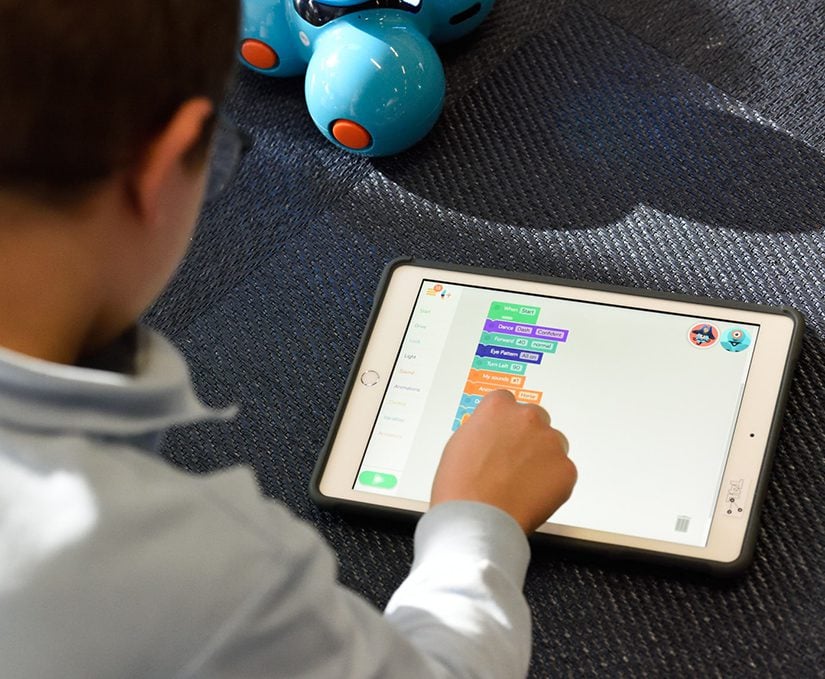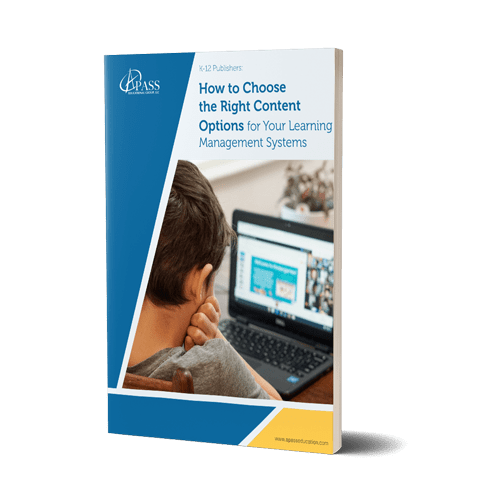Gamification makes the curriculum more engaging. Research shows students and teachers enjoy playing together as they learn about content. Also, gamification helps improve problem-solving and work skills. With remote learning, gamification is the way students interact with classmates. Most importantly, parents and teachers can view and track student progress toward understanding skills. Here are six diverse ways publishers can gamify content for the K-12 classroom.
What is Gamification for Learning?
Gamification and gamified learning are popular K-12 strategies. Still, it is easy to confuse the terms. Gamification integrates game elements in a non-game setting. Teachers use game elements in the classroom, and these game elements drive motivation and increase task focus. So, students earn points for completing assignments. The teacher uses a leaderboard to score progress. Then, teachers award badges and rewards for achieving the desired goal. In contrast, game-based learning uses existing or customized games. Students play games that target specific skills and learning objectives. Often, these games are digital products offered by publishers.
Strategy 1: Create Challenging Games
So, publishers can make games challenging for students. Therefore, games that give learners choices motivate them. Gamification is a gentle push for learners. They choose how they need to complete the game. This strategy relies on healthy competition and beating personal bests. Besides that, this strategy gives students a safe place to fail. Still, learning management systems must be able to support the various digital pieces.
Strategy 2: Provide a Platform for Gamification
Still, gamification needs a platform. Publishers get to create an array of digital products. Also, publishers can use gamification to give students real-time feedback. Therefore, the platform must do more than keep score. Publishers can set up platforms for social interaction between students and teachers. So, whatever game-based learning strategy districts choose works. This platform gives learners a healthy, safe place to interact with peers. Younger students learn to use social skills, learn about online safety, and how to solve problems together. Yet, learning happens when students, teachers, and parents know how to use the LMS.
Strategy 3: Product Offerings Like Personalized Learning Supports Gamified Learning
Likewise, game-based learning lets districts personalize learning to an array of students. Also, gamification lets students fit the learning process to their own needs. Publishers use a variety of strategies to weave games into their products. So, immersive standalone games are easy to align to learning objectives. Most importantly, teachers, parents, and students see progress towards skill mastery. Also, minigames are popular with learners. Still, sometimes learners need a quick mental break.
Strategy 4: Add Fun Digital Tools for Gamification
Likewise, playful tools that address a specific skill can hook students. Content teams can become creative to develop these tools. Fun digital tools are cheaper to create than standalone immersive games. Therefore, publishers can try mini game-based learning concepts in the field. These interactives are simple drag and click activities. Still, these fun tasks augment content and break up information. Besides that, students like fun digital tools. Avatars and other choice tools make learning fun.
Strategy 5: Reward Desired Behaviors
Publishers can offer a variety of digital products that support positive reinforcement. Therefore, gamification rewards students for the behavior teachers want to see in them. Products motivate positive behaviors in students like study skills or even skill mastery. The students are awarded for these behaviors. Also, publishers can offer products that bridge remote and in-person classrooms. Teachers can give rewards through the learning management system or publishers’ platform.
Strategy 6: Offer Engaging Simulations for Gamification
Also, publishers can invest in simulations. These products mimic real-life systems and tasks. Publishers use simulations to expose students to challenging, thought-provoking, or financial management real-life tasks. Even though simulations are cost-prohibitive to create for publishers, they are worth the investment. Districts buy simulations to help train workforce skills in high school. Also, simulations offset the costs of expensive labs.
In sum, publishers will see a return on investment when it comes to gamified learning. Moreover, content teams can highlight their creativity when gamifying learning tools. Still, products that challenge and engage learners work best. Also, publishers support K-12 districts with a variety of gamification products.





